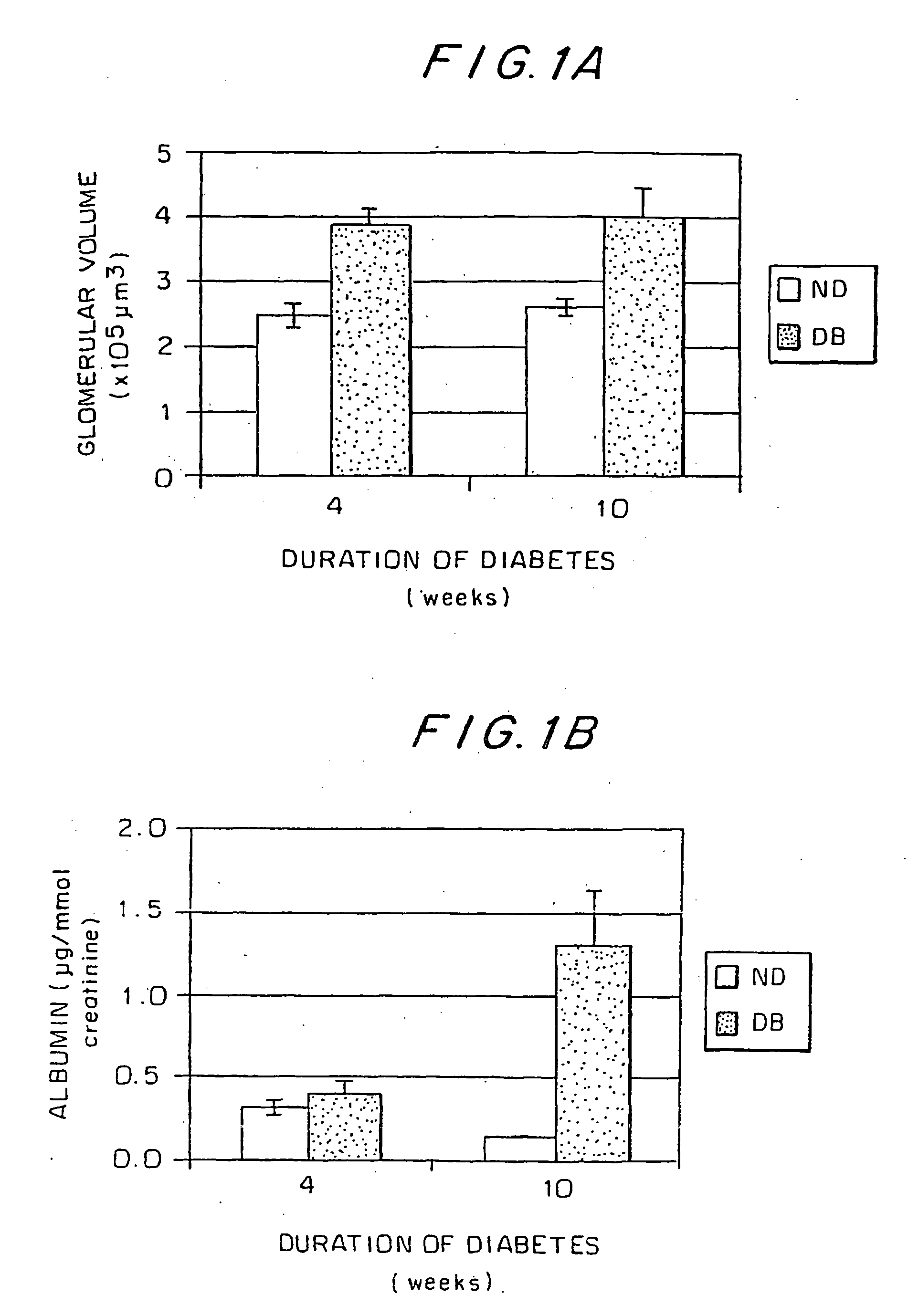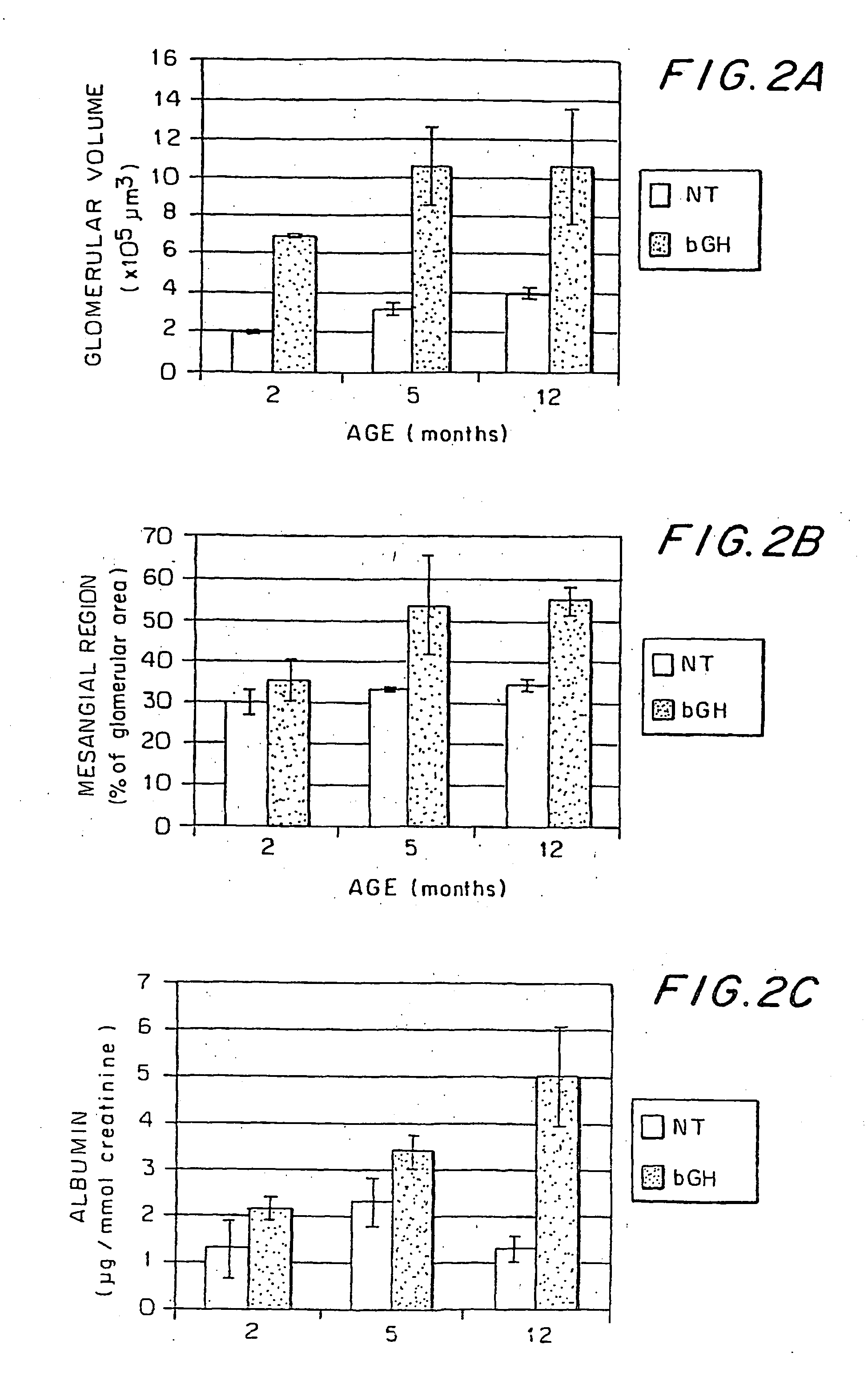Diagnosis of kidney damage and protection against same
a technology of kidney damage and diagnosis, applied in the field of nucleic acid molecules and proteins, can solve the problems of affecting the normal function of kidney function, and unable to repair damaged glomeruli, etc., and achieves tight metabolic control. , the effect of reducing the risk of kidney damag
- Summary
- Abstract
- Description
- Claims
- Application Information
AI Technical Summary
Benefits of technology
Problems solved by technology
Method used
Image
Examples
example 1
Differential Expression of Genes in Kidneys of Streptozotocin-Treated Mice as a Result of GHR / BP Knockout
[0616] To identify genes potentially involved in the protection of kidneys during diabetes, we induced diabetes by STZ treatment of GHR / BP − / − (knockout) mice (prepared as described by Zhou, et al., 1997, supra) and nontransgenic (+ / +) mice. These mice had a 129 Ola / BalbC genetic background. A PCR-based strategy was used to generate cDNA subtraction libraries from RNA isolated from the kidneys of diabetic − / − and + / + mice after ten weeks of hyperglycemia. To identify genes whose increased expression potentially results in protection against glomerulosclerosis, the cDNAs expressed in + / + kidneys were subtracted from the cDNAs expressed in − / − kidneys, resulting in a library (− / −) consisting of cDNAs upregulated in the − / − protected kidney. To identify genes whose decreased expression potentially results in protection against glomerulosclerosis, the cDNAs expressed in − / − kidneys...
example 2
Differential Expression of L Genes in Kidneys of Nontransgenic Mice as a Result of Streptozotocin Treatment
[0687] End stage renal disease (ESRD) is a costly outcome of diabetes, yet it is a difficult complication to prevent. Factors that influence its development include heredity, blood glucose levels, and blood pressure. ESRD is a progressive disease that can take many years to develop. It can sometimes be treated, and even reversed, if caught at an early stage. Thus, an understanding of the molecular basis for the development and progression of diabetic nephropathy culminating at ESRD is crucial for the diagnosis, treatment and prevention of this debilitating disease.
[0688] Streptozotocin-induced diabetes in mice provides an excellent model system for studying the development of insulin-dependent diabetes mellitus (IDDM) nephropathy, at both the physiological and molecular level. We, and others, have used this model system to examine the role of specific genes or gene products ...
example 3
Differential Expression of Genes in Kidneys of Mice as a Result of Overproduction of Growth Hormone
[0742] In this example, genes were identified which were differentially expressed in (1) transgenic mice with kidney damage as a result of overexpression of bovine growth hormone, as compared to (2) nontransgenic control mice.
[0743] A PCR based cDNA subtraction strategy was used to create libraries containing genes potentially involved in the progressive development of nephropathy. Total RNA was isolated from the kidneys of bGH and nontransgenic (NT) control mice at 2 months, 5 months, and 12 months of age and used to create the two cDNA libraries for each time point. The bGH libraries at each time point consisted of cDNAs upregulated in the bGH as compared to NT mice. The NT libraries consisted of cDNAs down-regulated in the bGH as compared to NT mice (i.e., upregulated in the NT as compared to the bGH mice). Subsequently, cDNA clones from each library were spotted on replicate mem...
PUM
| Property | Measurement | Unit |
|---|---|---|
| Tm | aaaaa | aaaaa |
| temperature | aaaaa | aaaaa |
| temperature | aaaaa | aaaaa |
Abstract
Description
Claims
Application Information
 Login to View More
Login to View More - R&D
- Intellectual Property
- Life Sciences
- Materials
- Tech Scout
- Unparalleled Data Quality
- Higher Quality Content
- 60% Fewer Hallucinations
Browse by: Latest US Patents, China's latest patents, Technical Efficacy Thesaurus, Application Domain, Technology Topic, Popular Technical Reports.
© 2025 PatSnap. All rights reserved.Legal|Privacy policy|Modern Slavery Act Transparency Statement|Sitemap|About US| Contact US: help@patsnap.com


